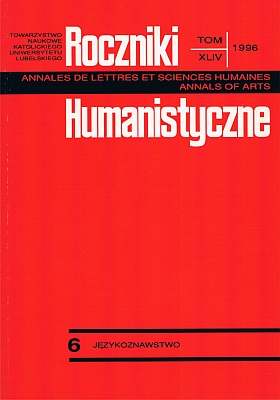Set and Individual Similes in the Writing of T. Konwicki
Abstract
The paper seeks to describe similes copied down from 18 novels, two short stories and five screenplays written by T. Konwicki. Among these similes we distinguish two types: set and individual. In the texts under analysis the author has found 4227 similes, among which 337 are set, including also the modified similes.
Similes enrich the contents by the similarity they show, and also by what they do not show, which occur in the image and in a peculiar way overshadow the object or phenomenon under description, putting on it a subtle overtone. Poetic similes play a special role here. When forming them the author most often ignores common experience. As a result, similes are formed with an individual, unique character. They are creations of the author's special sensitivity, the defining elements contain fine, or even sophisticated, images. Such similes introduce new qualities into the work, and at the same time give it a form unique in its kind.
The similes in which the relationship between the elements under comparison is preserved play a different role. Usually, they have a descriptive character, do not surprise us so much with their vividness, and serve to convey information. On their formation stress is laid on the aptness of comparison. What is meant here is such comparison which would, possibly most accurately, describe the defined object. It is most evident in the established similes, wherein some pattern of a characteristic, or something that passes for it, are brought to mind. Accordingly, set similes are a kind of reflex of stereotyped images and convictions of the users of a given language.
Moreover, the phraseological relations differ from temporary verbal connections by their structure. They are characterized by the ellipsis of a larger number of elements under comparison, their defining elements are poorly developed, and in the function of the link of comparison almost always occurs "as."
The reason for the greater abundance of forms and kinds of individual similes lies in the fact that they are created, and not recreated. The author is therefore freer and has nor opportunities, for he is not limited by any established structure.
The opposition: set − individual and colloquial − literary decide about the differences between the similes copied down from T. Konwicki's works.
Copyright (c) 1996 Roczniki Humanistyczne

This work is licensed under a Creative Commons Attribution-NonCommercial-NoDerivatives 4.0 International License.





